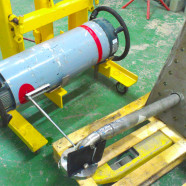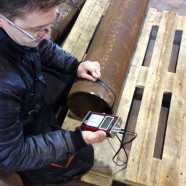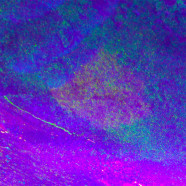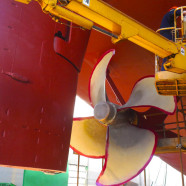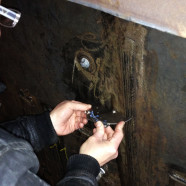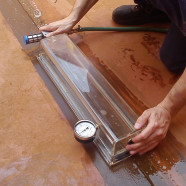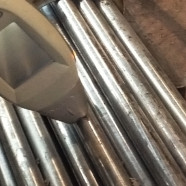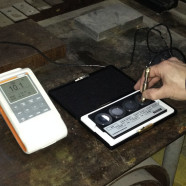Radiographic and gammagraphic inspections (RT)
Radiographic and gammagraphic inspections are methods of non-destructive tests that use ionizing radiation in order to verify the integrity of pieces or parts of them. This is done by the radiography of the affected area that is the projection of the piece image on the film that will be characterized by darker areas (lower opacity of the material to radiation ) and lighter areas ( most of opacity) ; this difference in the localized density of the component creates differences in the blackening of the film areas allowing us to detect the presence of defects that will appear (with the...
DetailsUltrasonic test and thickness measurements (UT)
Ultrasounds are elastic waves (or mechanical vibrations ) which spread in the materials with a stated velocity depending on material characteristics and on kind of wave used. As well as the light, ultrasonic waves may undergo reflections, refractions, diffractions , diffusions in the passage from a means to another one. Just these features , in conjunction with known speed of propagation and the angle of incidence of the ultrasound beam , allow the identification of discontinuities within the pieces examined, their location and depth. This method of investigation , that is volumetric,...
DetailsMagnetic particles inspection (MT)
The magnetic particles inspection allows to detect the presence of surface and sub-surface ( a few millimeters) discontinuities inside of ferromagnetic materials by exploiting the phenomenon of ferromagnetism .Consequently to the magnetization of the piece, induced by the special equipment and following the application on its surface of a ferromagnetic product ( liquid or powder ) , the latter will tend to concentrate at the points where the magnetic field undergoes a deviation ( due to ” reluctance “of the material , in correspondence of discontinuity ) allowing to detect the...
DetailsPenetrant test (PT)
The penetrant test (PT) generally consists in the use of a red liquid with particular characteristics of viscosity and capillarity named “dye penetrant” and another white coloured called detector that allow the detection of defects opening on the surface of ferrous and non-ferrous materials. After applying the red liquid on the piece to be examined and having waited a few minutes for its penetration in discontinuities , it will be carefully removed from the surface, and the developer will be applied on the same giving evidence of flaws, recalling on the surface the part of dye penetrant that...
DetailsVisual inspection (VT)
The visual inspection is an essential method to ensure a high quality standard of the product. You can get useful information about the quality of the surfaces examined , their geometry , the finish, the presence of wear, corrosion , etc . as well as on the presence of visible defects to the naked eye . It is possible also using tools such as microscopes or lenses ( to identify very small details) or mirrors , borescopes and endoscopes that allow the inspection of areas otherwise not accessible ....
DetailsLeak detection (LT)
The leak detection, performed using vacuum box equipment, is essential to check for leaks or defects extended trough the tickness of components such as welding of open tanks that can not be pressurized directly and vessels. After applying a special liquid like soapy water on the area to be tested , a depressurization by compressed air will be applied on the same; any leak becomes clearly visible because the air recalled from the opposite surface will cause the production of bubbles allowing to localize the areas to be...
DetailsChemical tests “on site” (XRF – OES)
Chemical tests “on site” have the big advantage to perform the analysis with great versatility and speed directly at the customer site . For this purpose can be used XRF equipment (PMI – Positive Alloy Material Identification) for a generally qualitative analysis of the products and OES equipment (Optical Emission Spectroscopy) for a control also quantitative of the elements of the material subjected to analysis without the need to take samples from the analyzed piece. In both cases it is actually possible to obtain the chemical composition of the product , but the OES...
DetailsFerrite content analisys
The ferrite content analisys is performed on austenitic or duplex steels in order to determine, by magnetic induction, the ferrite contained amount . This test is normally required because a too high percentage of the same could create problems of metallurgical nature.
Details
